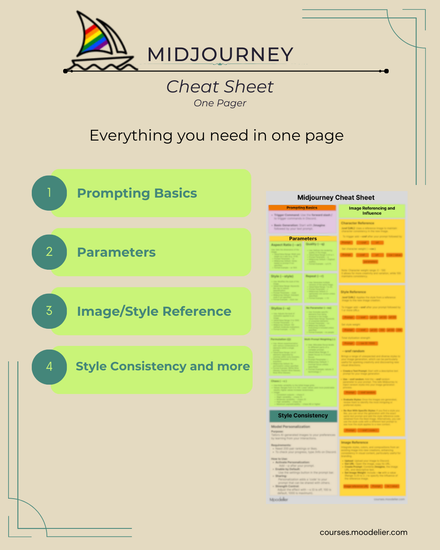Who doesn’t love watching a short and sweet video, or seeing a fun stop motion while scrolling through an image-laden social media feed? Whether they’re made purely for entertainment, to show off a creator’s portfolio, or are thoughtfully curated for educational purposes, stop motions and short-form videos are here to stay.
.gif)
" If you’re already going to be shooting still imagery, why not use those very same sets and props to snag a few shots for a GIF, or even a short-form video? "
Now, we get it: it’s been a clunky transition for most of us. We all grew accustomed to the world of stagnant imagery, thanks to years spent on Instagram and Pinterest. But, once those platforms transitioned to including video, we realized we had a choice: we could adapt, or we could live in denial, while staring at our pretty, albeit still imagery.
(We wanted to do one, but we ended up doing another)
Several months later, we can now say that we believe everyone has the opportunity to utilize stop motions (GIFs) and short-form videos in their marketing content. Why? Well, allow us to digress.
Motion content catches the eye
Be honest: it takes something fairly punchy and unique to stand out when you’re scrolling through Instagram, doesn’t it? Motion content, by nature, serves to catch the eye and stop your audience’s scroll.
We love that, don’t we?
Motion content is unique
There are so many more ways to creatively approach a simple stop motion. If you think about it, by implementing movement in an otherwise still image, you’re adding another layer of uniqueness to what you create.
One GIF could be done 10 different ways - what’s not to love?
Motion content adds value
If you’re a photographer, videographer, illustrator or any other kind of visual artist, knowing how to create stop motions and video content will inherently add value to the services you offer.
Just imagine - if you’re creating GIFs and short videos and your ideal audience is attracted to those, you’re essentially adding on and advertising another potential creative arm to your business. Even if you don’t opt to offer GIF and video content to your clients, there’s something to be said about showcasing another level of skill in your personal content!
Still feeling unsure about how to even start adding stop motions and short-form videos to your repertoire? No worries, we’ve got a few tips for you!
Tips to help transition to motion content
- Plan ahead for a super productive shoot.
If you’re already going to be shooting still imagery, why not use those very same sets and props to snag a few shots for a GIF, or even a short-form video?
The process of planning for a stop-motion shoot and building out specialized sets can be daunting. So, try to ease into things by making a mental note to grab some extra footage and frames while you’re already on set!
- Keep things simple.
Whether you’re creating a GIF, Reel or TikTok, we’ve found that the shorter and simpler those pieces of motion content can be, the better.
For Reels + TikToks, we strive to keep things between 15-30 seconds. And as for your GIFs? Aim to shoot no more than 12-24 frames.
- Read our Stop Motion + Short-Form Video Guide for free.
In our blog titled, “3 Ways to Utilize Stop Motions and Short-Form Videos” we cover tips and strategies on unique ways to implement motion content in your marketing. The best part? It doesn’t matter whether you’re a photographer, videographer, interior designer or business coach - there’s something in that guide for everyone.
- And last but not least, grab our Motion + Social Media Branding Course while doors are still open!
Through 6 modules made by 7 incredible creators, you’ll learn how to make stunning, on-brand motion content. You’ll also get free access to our Moodelier Salon, too!
But don’t take our word for it. Here’s a peek at what our community had to say about our courses!


" Moodelier is without a doubt the best investment I have ever made to my professional life. "
Feedback for Moodelier’s Courses + Resources
Question 1: First, take a moment to introduce yourself + your brand!
- My name is Taylor and I’m a still life photographer based in Michigan. I started learning photography almost 4 years ago, but up until this year, I have always just done portraits and concerts. After seeing the impact Covid-19 had on my business in 2020, I decided to adjust and learn still life photography. It’s been about 8 months now since I started and I now do still life almost exclusively and have fortunately been able to go full time with it.
- I'm Ani of Ani Paoletti Creative! I'm a brand and lifestyle photographer, helping brands embrace their magic with out-of-the-box photography. I specialize in prism effects, and love to give my clients the opportunity to test their own comfort zone to elevate their brand's imagery. I don't really believe in "niche-ing down"– I enjoy working with brand who are product-based and brands that are service and human-based, so my work encompasses both product in-studio and product lifestyle photography. I also offer VIP experiences for personal branding shoots to entrepreneurs.
- My name is Maria and I'm from Venezuela and I'm a professional photographer and artist, who specializes in dog photography (commercial and personal) and paint custom pet portraits through my brand @colorforbreakfast. Currently based in San Diego. Oh and something very important about me: I love pugs!
Question 2: How have Moodelier’s courses helped you?
- (Taylor) Moodelier's products and online courses as a whole have elevated my photography, my creative process, and the way I work with and approach clients. Teresa Freitas's course on creating a visual proposal for brands completely transformed the way I worked. By learning to craft proposals, I have found a lot of success when pitching to brands through cold emailing and when responding to inquiries. Working with proposals and sketches has also helped me better communicate my vision to my clients and makes the whole process more collaborative. Another course that I found invaluable was Weekend Creative's course on set design for product photography. Their course was inspiring and it helped a lot to see how they approach each shoot, how they create concepts around the brand and product, and how they use set design to bring those concepts to life.
- (Ani) I took the Moodelier course with Helen Koker and watching her post production process using white Moodelier props just blew my mind–and changed my own post process. Now, I love changing the color of my prime pieces in post to make them more on brand or play with overall concepts. The first time I tried changing a white Moodelier piece on my own was a total disaster, so I learned a lot about Photoshop for editing and how to see the potential in a blank canvas, so to speak, with using an all white piece but being able to change the color later.
- (Maria) I follow color whenever I see it so it was pretty natural for me to start following [Moodelier] and I was in love! Moodelier courses have had an incredible influence in the way I work and create. It gave me a new perspective on how to approach things, and most importantly gave me tips from and connections to some of my favorite creators on the internet! From starting the creative process to how to use every single layer in Photoshop like a pro, Moodelier opened a door of possibilities for me and made learning so easy and fun. I quickly learned new techniques and put them into practice. It totally changed the way I work in a positive and more professional way. Clients have also found me through Moodelier! So honestly Moodelier is without a doubt the best investment I have ever made to my professional life.
Ready to add motion content to your brand’s repertoire? You’re in luck - our Motion + Social Media Branding course is open from now until December 3rd.
Photo Credits: The gif by @helenkoker
Photo on the left by @taylorcreadystudio
Photo on the right by @anipaoletticreative
Last photo by @mangoymaria










New Comment